Nissan design
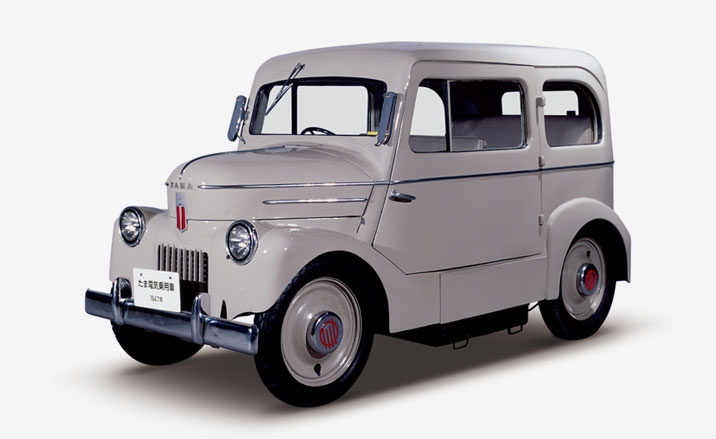
The Tama was Nissan’s first electric vehicle. It was built in 1947 just after the war when oil was very scarce, so the Japanese government promoted the manufacture of electric vehicles. The Tama had a cruising range of 96.3km and a top speed of 35.2km/h. It was later used as a taxi until it ceased production in 1950.
The motoring world is moving slowly but surely towards electric vehicles. Right now, however, only a handful of major manufacturers have stuck their head above the parapet and pledged their future allegiance to sparks rather than fossil fuels.
Nissan began toying with the electric vehicle as far back as 1947 when it produced the Tama. This year, however, the firm unveiled its first mass-produced global electric car, the Leaf, together with a bold future vision for green city driving in the form of the Land Glider. Both shown at the 41st Tokyo Motor Show, they mark a major commitment to making electric work within the mass market.
W* caught up with Alfonso Albaisa, vice president, and Martin Uhlarik, project lead designer at Nissan Design Europe in London. The Paddington studio has just won the design competition for the first Infiniti electric car, and his team will be responsible for sketching many future Nissan electric cars.
What inspired the unusual narrow shape and the motorbike driving-feel of the Land Glider electric concept car?
Alfonso Albaisa: The car was inspired by the new generation of three-wheelers. These narrow cars, though, are not that stable. The Land Glider, therefore, leans automatically into corners - the feeling is very natural as the driver moves automatically with the car’s motion. This shifts the centre of gravity and adds stability to the car when going around corners.
How has the lack of a combustion engine helped achieve this narrow shape?
Receive our daily digest of inspiration, escapism and design stories from around the world direct to your inbox.
AA: Electric vehicles create so many possibilities. If this were an internal combustion engine car you would have to deal with a lot of extra baggage and weight. Instead, the flat and compact lithium-ion battery (which Nissan makes in-house and uses to power motors housed inside the wheels) takes little space and has allowed us to achieve this narrow architecture.
Do you believe that green cars should have their own unique architecture and formal language?
AA: They are finding their own architecture. The formal language, however, is more of a conscious effort - it’s the intentional part. The zero emission car doesn’t need its own design language, but it is important not to express it just like a regular car.
Martin Uhlarik: The potentials are endless with the package, but you can only push this with niche vehicles. The more expensive the car, the less experimental you can be.
How has this been expressed in the Leaf electric production car, which looks more like a conventional square shaped hatchback?
AA: Most people think the teardrop is the most aerodynamic shape, but it needs to be much longer to have enough flow. For a car the size of the Leaf, the square shape is the best as it controls the airflow. You want the air on the side and top to move smoothly over and end at the rear where the semi-square shape directs the air away from the car. We call it the ‘aesthetics of effortlessness’.
MU: There is the sub message that you need to get across with electric cars. The Leaf is a standard vehicle but certain elements say it is a green car. For instance, the blue lighting has an electrical subtext. The aerodynamic package is also giving an eco message.
Why use LED lights, which are substantially more expensive to produce?
AA: The LED light intensity is so strong it allows us to reduce the size of the headlights. Additionally, regular bulbs sap energy out of the battery, but with LEDs you have more light without being conscious of draining the energy from the car.
Electric powered cars have no sound at all. How will pedestrians be warned of an approaching car?
AA: We don’t have the sound yet and we don’t want to do something too normal. The more luxury Nissans and the Infiniti brand would need a unique sound. Electric performance cars have tremendous power so this will have to impact on their choice of sound too. It is such a new subject - I love the fact that we are ‘sound brain-stormers’. It is so artistic trying to find a sound that will make you feel you are contributing to the benefits of green driving.
MU: The sound also needs to be geographically different as there are different cultural references.
A sim-card in the Leaf connects the car with the house and a sophisticated IT support system. Will the future car become simply another electronic gadget?
MU: In the future this is going to go a step further so that once you plug your car in to the house’s electricity supply you have affectively connected the two worlds. It needs to become one seamless network of work, commute and home. How this will impact on the visual language depends on the car and who it is aimed at.
Do you believe there is a place for high-performance electric cars?
AA: There are people who don’t love sexy sports cars. My teenage kids, for instance, are obsessed with electric cars because they feel they are helping the environment. ‘It’s cool not to pollute,’ they say.
On the other hand, electric cars have a lot of torque so they are great for sports cars. If I were to design one from scratch it would be a lot lighter in weight than say the GT-R - and definitely less brutal looking. You should celebrate mostly torque and acceleration, express nimbleness and explosive speed with a green sports car.
The original Z sports car was first introduced in Japan in 1969 as the Nissan Fairlady Z and exported under the Datsun 240Z name. The legend was revived through the years the latest reincarnation being the 350Z and the current 370Z.
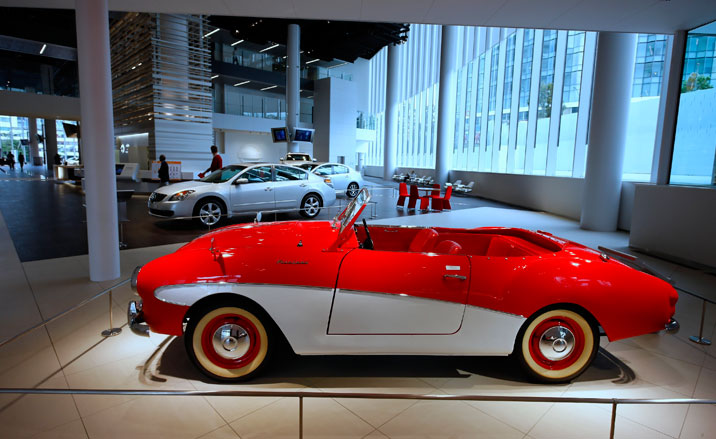
Fairlady Z
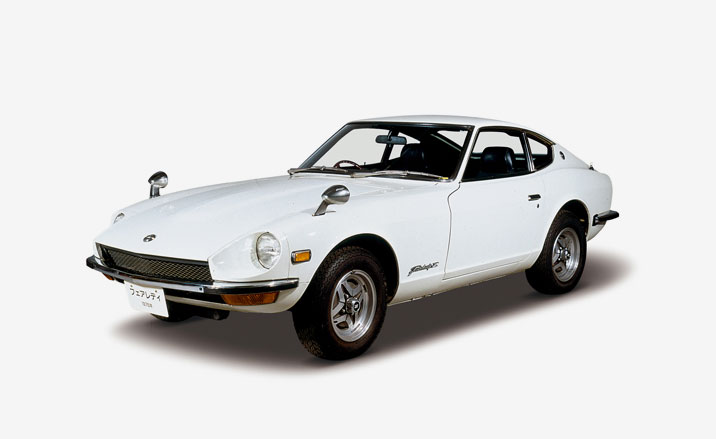
The Nissan Fairlady Z
The EV Guide was unveiled at the Tokyo Motor Show in 1985. The one-box, six-seater electric car was used to transport royalty and other state guests on VIP factory visits, and it acted as a guide car for many years in Japan.
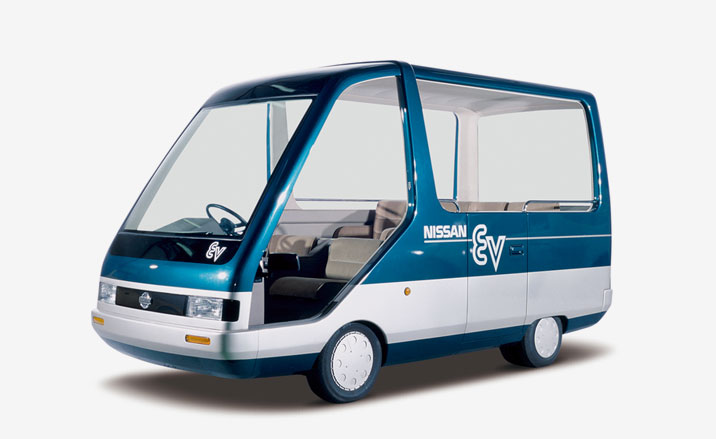
EV Guide
Launched in1987 and in the tradition of the marque’s low-volume genre cars, the SCargo’s unusual and playful styling, with its large body, squat nose and high 1,230mm roof, has made it one of Nissan’s most iconic cars. So much so that it inspired Alfonso Albaisa, then a young aspiring New York sculptor, to become a car designer, and join Nissan.
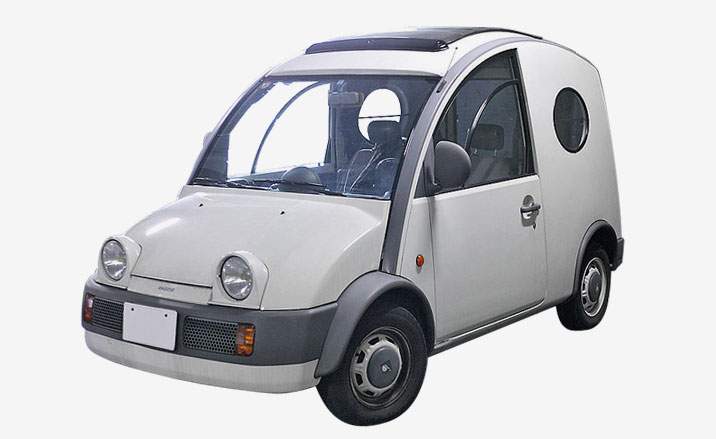
SCargo
The Pao (pronounced pow) was penned in 1989 by the Japanese designer Shoji Takahashi. Like the Figaro, it was intended as a limited-edition fashion model with production runs kept around 10,000 units. The bold retro design made it very popular and buyers were chosen by a lottery system. The car was manufactured until 1991.
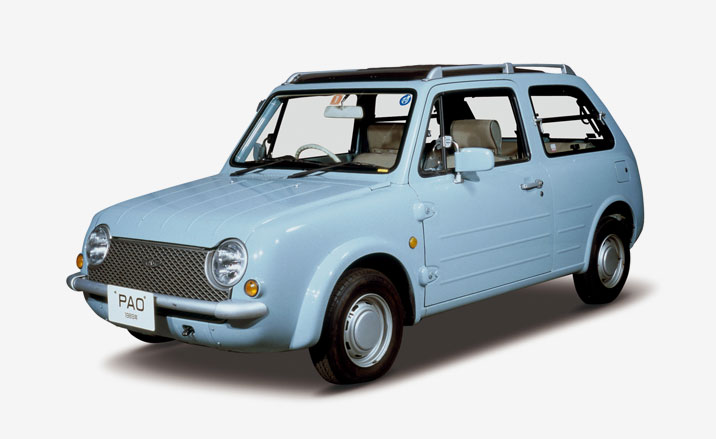
Pao
The Pivo was first unveiled in 2005 as a futuristic concept for the urban commuter. Electrically powered, the centrepiece is its unusual 360-degree revolving three person’s cabin. The Pivo 2 appeared a couple of years later expanding on the concept by introducing a robotic agent to proposes an entirely different relationship between car and driver.
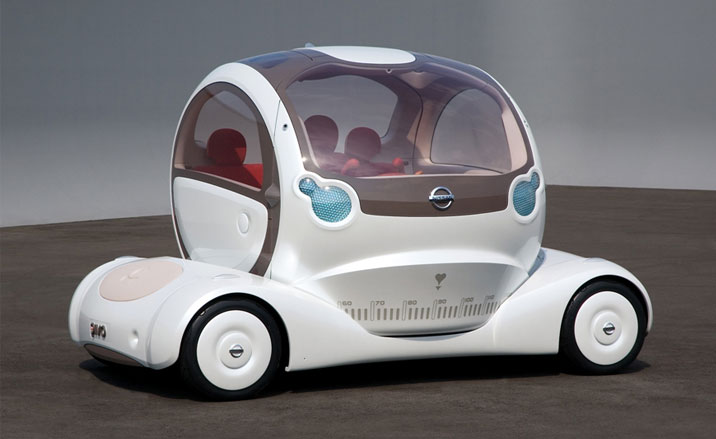
Pivo
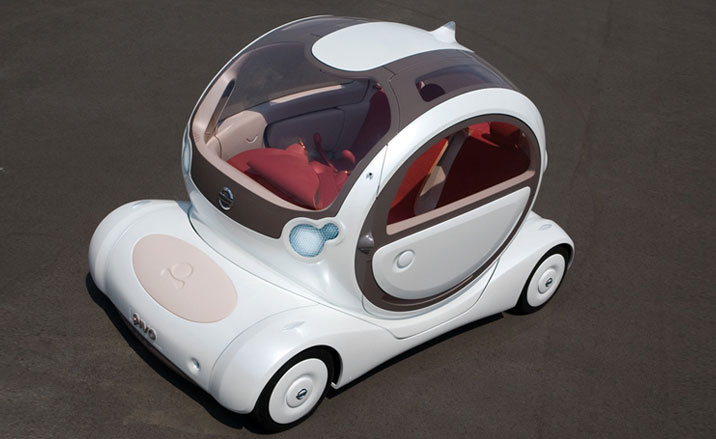
The Nissan Pivo
The Mixim concept car, unveiled in 2007, was an earlier indication as to Nissan’s intentions for a global electric vehicle. Designed by a team of under 25s in Japan, the car was inspired heavily by the world of anime, Second Life and computer games. The driver sits centrally F1 style, with two seats on either side, while the steering wheel and controls are inspired by an interface familiar to computer games.
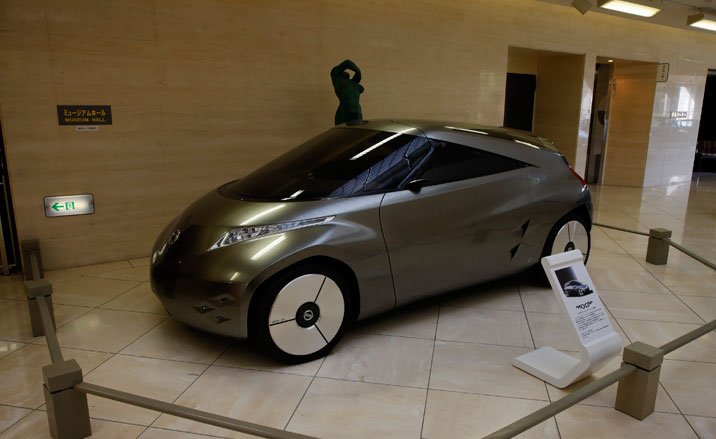
The Nissan Pivo
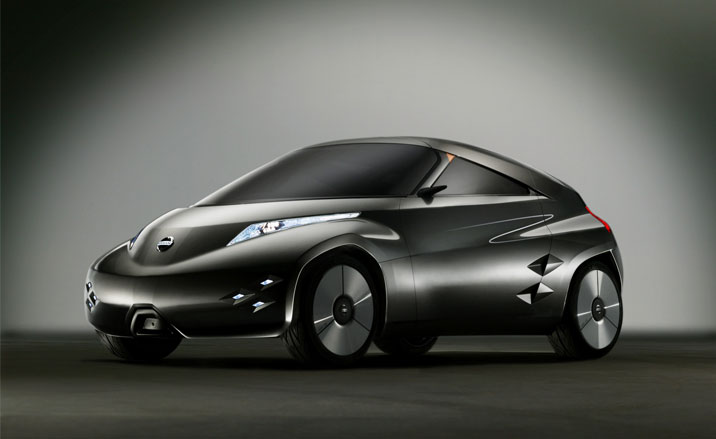
The Nissan Mixim
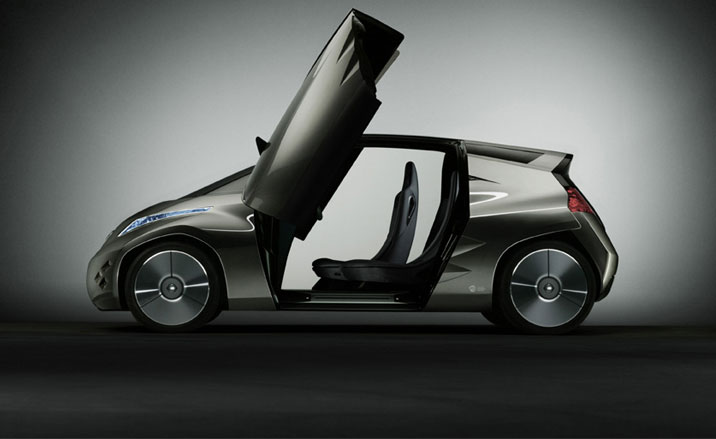
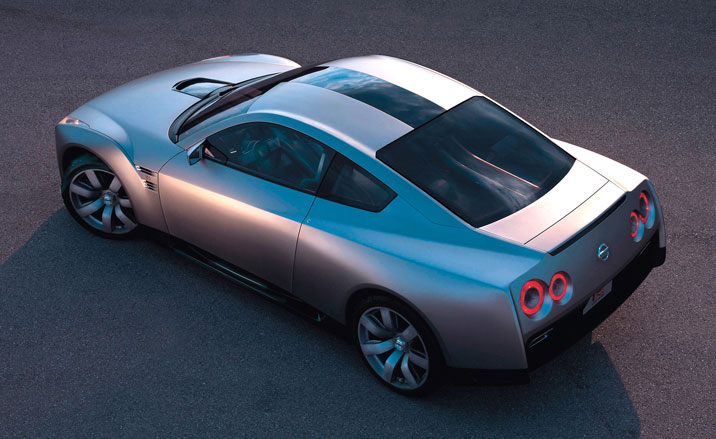
GT-R
First introduced as a concept back in 2001, the GT-R production car was launched in 2007 as the 21st century interpretation of the Skyline GT-R performance cars of the 60s and 70s. It may have been designed in Nissan’s Californian studio, but intentionally or not, it celebrates Japan and its robot culture where Alfonso Albaisa says there is this ‘brutal design on the one hand and a wonderful anime cuteness’ on the other.
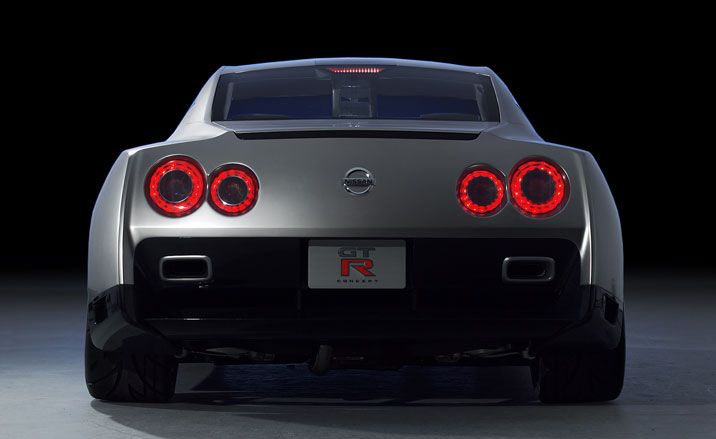
The Nissan GTR
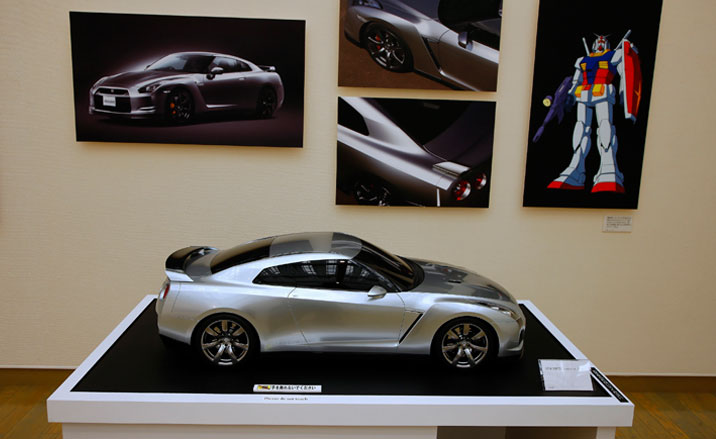
The Nissan GTR
The Cube was first unveiled in 1998 in Japan just as Shiro Nakamura took over Nissan design with the intent to inject more Japanese culture into future cars. As the name suggests, it has apparently cubic proportions, with straight lines and right angles referencing a very Japanese aesthetic. Intended as a vehicle primarily for urban mobility, the boxy design has since influenced many other city cars worldwide. The Cube is now in its third generation and sold globally.
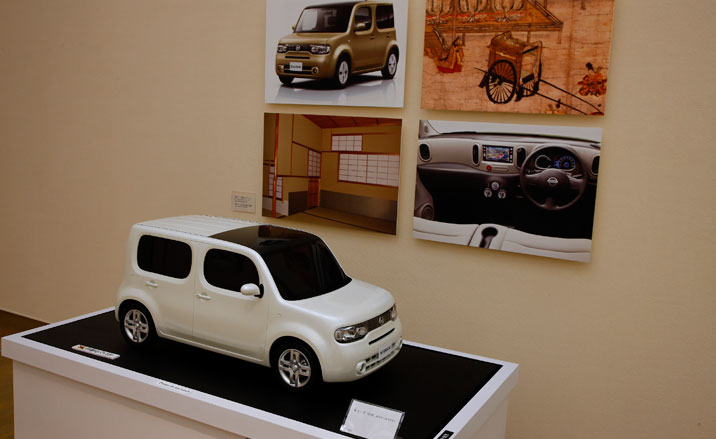
Just unveiled, the Leaf is Nissan’s first mass-produced global electric car. In order to attract regular car buyers, it has retained the basic car shape. The simple square hatchback architecture has, however, been manipulated to achieve maximum aerodynamic performance with lots of surface movements and sharp edged bodyside lines that direct airflow from the nose to the rear and away from the car. The sharp V-shaped face, with its up-slanting LED headlights and blue internal reflective design will form the basis for the face of marque’s future electric cars.
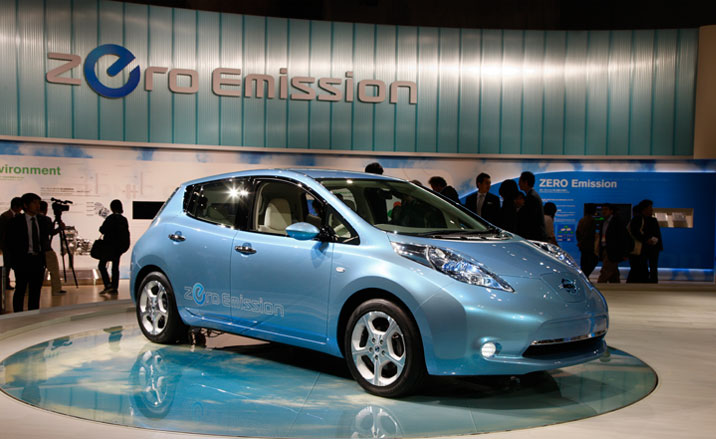
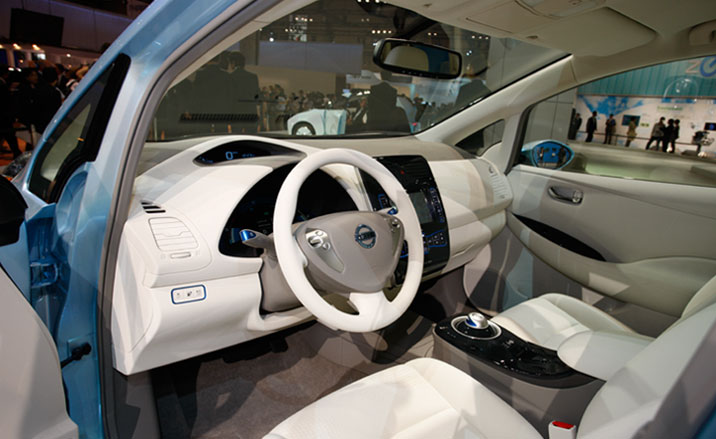
The Nissan Leaf
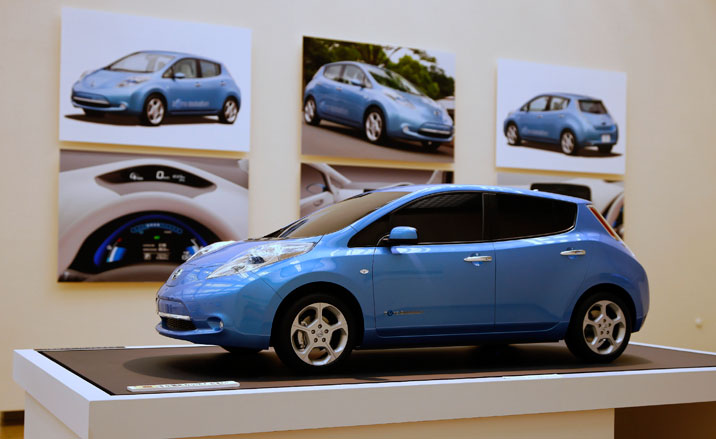
The Nissan Leaf
The Land Glider electric concept car, just unveiled at Tokyo, is a proposition for city driving in the next decade. The slim single-seater is easy to park and its tiny size will help cut urban congestion. For stability, the car and driver lean automatically into corners just like a motorbike. Project design director Koji Nagano says that the car, aimed at the younger generation, is primarily digitally-led. He explains: ‘The Japanese youth is more interested in linking to the internet and their mobile phones than they are in the vehicle.’ The Land Glider is intended as a collection of eco ideas, but certain design cues would filter through to an upcoming entry-level electric car.
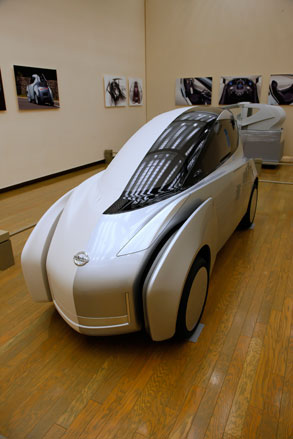
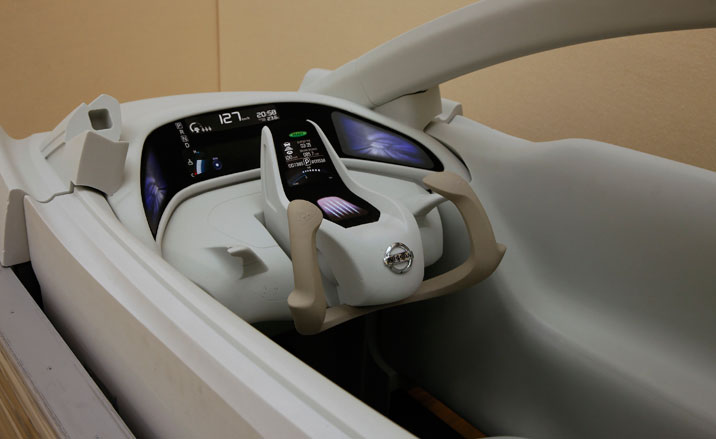
The Nissan Landglider
A writer and editor based in London, Nargess contributes to various international publications on all aspects of culture. She is editorial director on Voices, a US publication on wine, and has authored a few lifestyle books, including The Life Negroni.
-
 A tale of two Audis: the A5 saloon goes up against the A6 Avant e-tron
A tale of two Audis: the A5 saloon goes up against the A6 Avant e-tronIs the sun setting on Audi’s ICE era, or does the company’s e-tron technology still need to improve?
-
 Inside Christian de Portzamparc’s showstopping House of Dior Beijing: ‘sculptural, structural, alive’
Inside Christian de Portzamparc’s showstopping House of Dior Beijing: ‘sculptural, structural, alive’Daven Wu travels to Beijing to discover Dior’s dramatic new store, a vast temple to fashion that translates haute couture into architectural form
-
 A music player for the mindful, Sleevenote shuns streaming in favour of focused listening
A music player for the mindful, Sleevenote shuns streaming in favour of focused listeningDevised by musician Tom Vek, Sleevenote is a new music player that places artist intent and the lost art of record collecting at the forefront of the experience
-
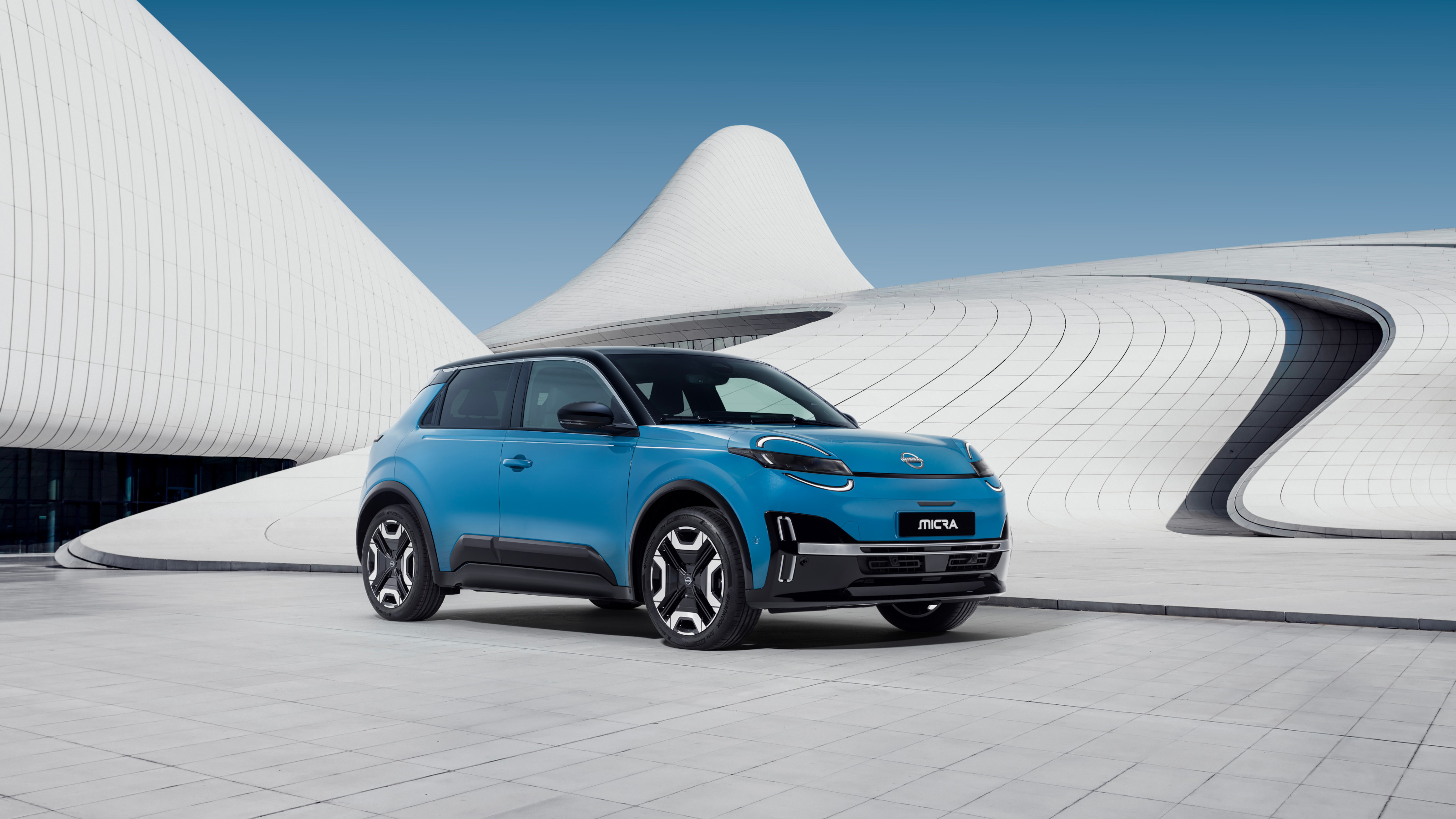 The Micra (finally) goes electric as Nissan ramps up its range of EVs
The Micra (finally) goes electric as Nissan ramps up its range of EVsThe compact Nissan Micra was once a global bestseller. After getting an early head start on electric mobility, the Japanese giant is looking to a new version of its small car to recharge its status
-
 Tokyo firm Built By Legends gives fresh life to a performance icon, Nissan’s R34 GT-R
Tokyo firm Built By Legends gives fresh life to a performance icon, Nissan’s R34 GT-RThis Japanese restomod brings upgrades and enhancements to the Nissan R34 GT-R, ensuring the cult of the Skyline stays forever renewed
-
 New-generation car camping and roof tents for luxury-loving adventurers
New-generation car camping and roof tents for luxury-loving adventurersCar camping is having a moment. While Hyundai and Porsche can get you kitted up, we explore other options
-
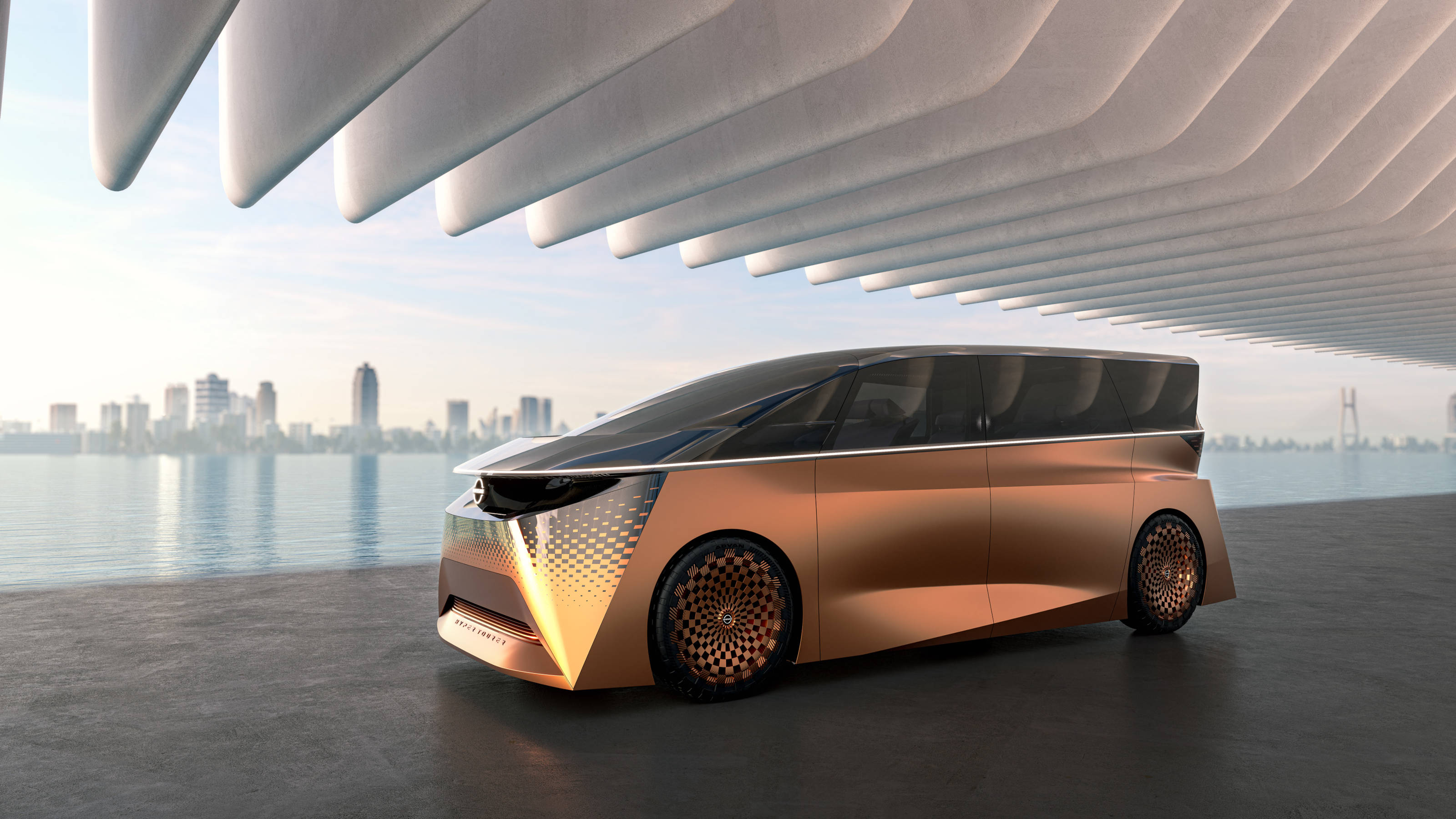 The debut Japan Mobility Show saw the country’s carmakers preview the near future
The debut Japan Mobility Show saw the country’s carmakers preview the near futureThe 2023 Japan Mobility Show offered up a vast array of futuristic transportation, from concept sports cars to autonomous taxis, and eVTOL aircraft
-
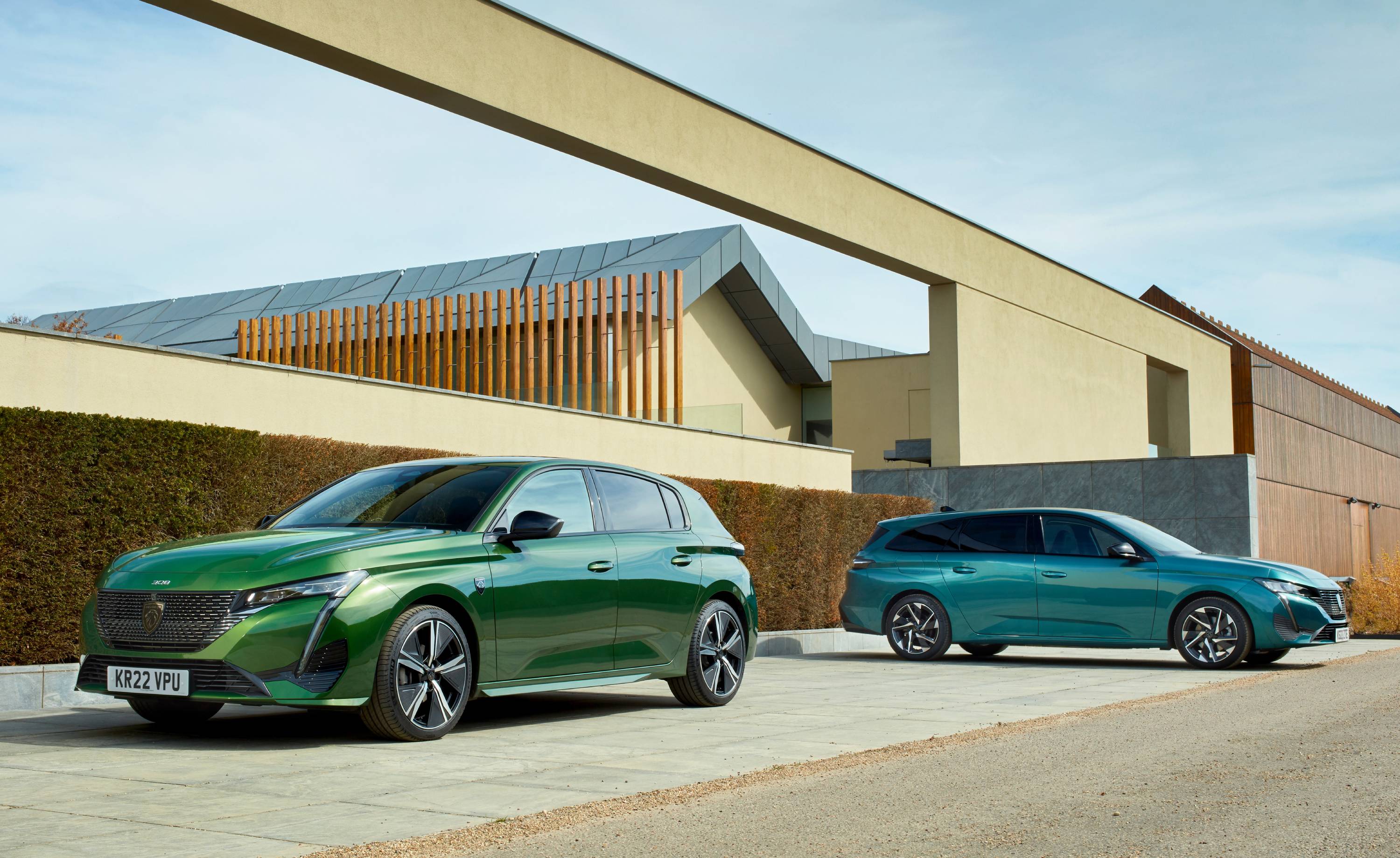 Peugeot’s sparky 308 gets hybrid power and handsome lines
Peugeot’s sparky 308 gets hybrid power and handsome linesThe Peugeot 308 proves that mass-market design needn’t be dull, blending hybrid power with sharp lines and excellent detailing
-
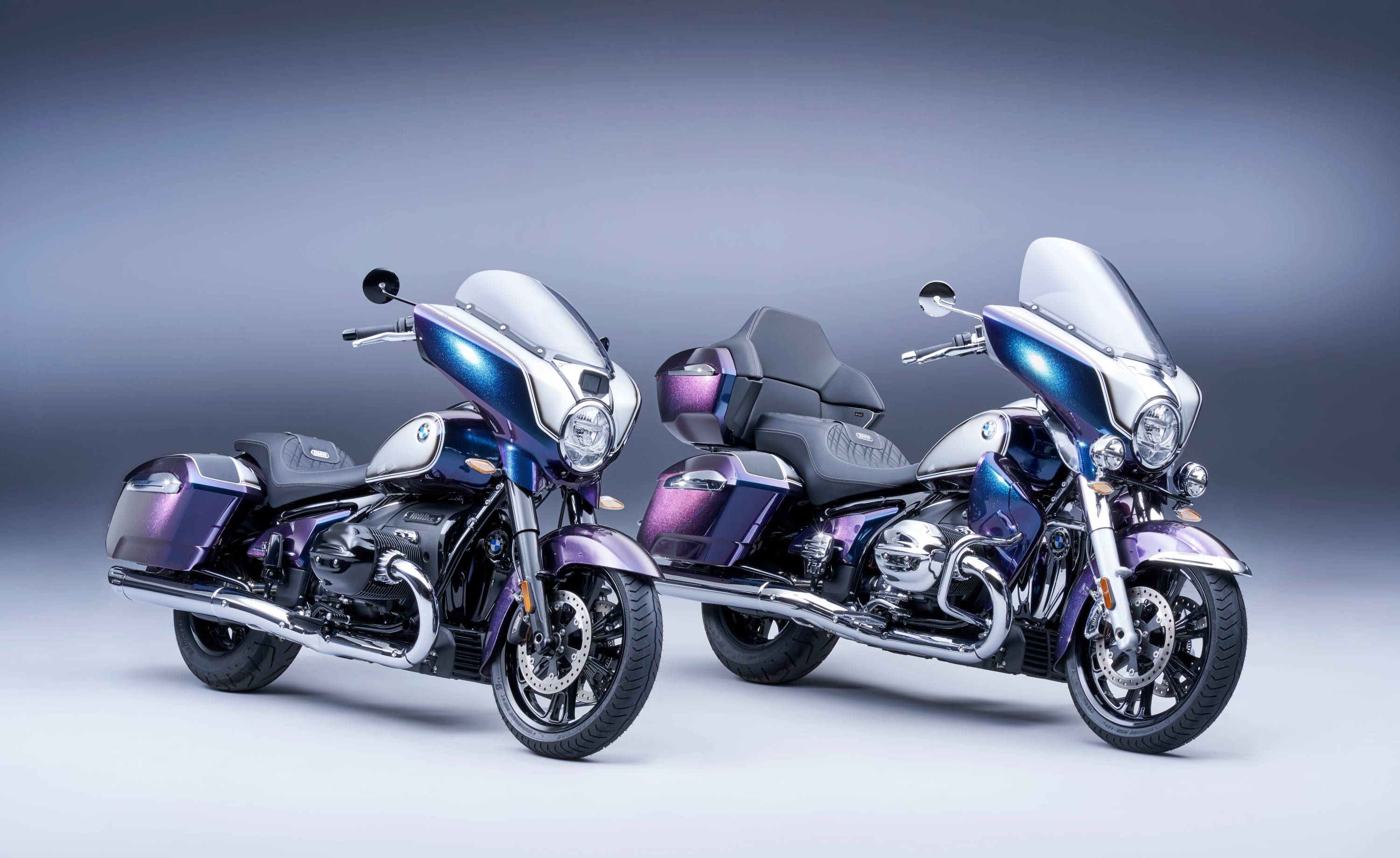 BMW Motorrad brings out the big guns for its newest cruisers
BMW Motorrad brings out the big guns for its newest cruisersBMW Motorrad R 18 Bagger and Transcontinental set the tone for high-voltage cruising with a brand collaboration with speaker specialist Marshall
-
 Dacia’s new Manifesto concept is a true outdoor utility vehicle
Dacia’s new Manifesto concept is a true outdoor utility vehicleUtilitarian auto brand Dacia sets a bold new agenda with its Manifesto, a concept car pitched at the active outdoor market
-
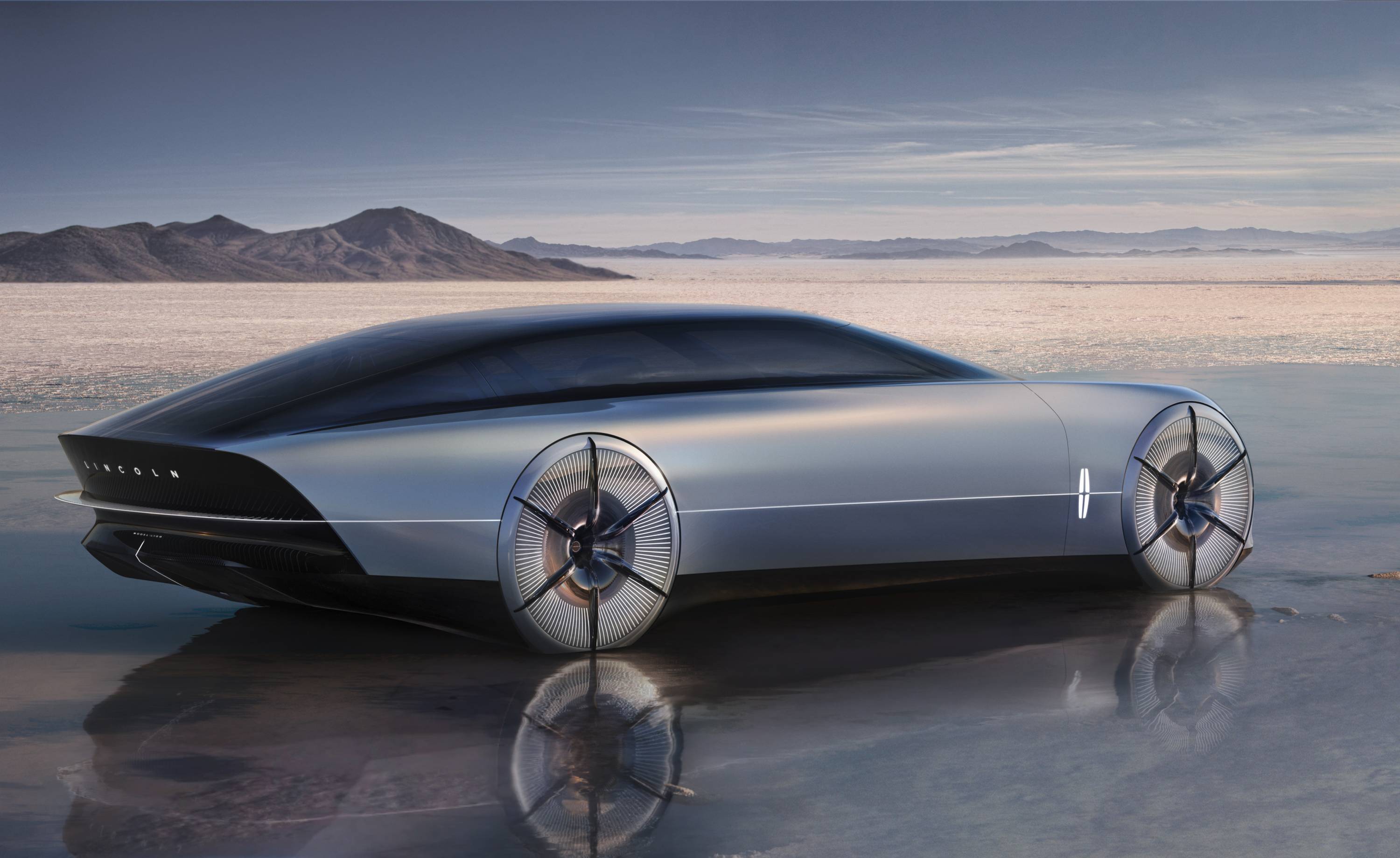 The sun sets on traditional supercars at California’s Monterey Car Week
The sun sets on traditional supercars at California’s Monterey Car WeekMonterey Car Week, the world’s most prestigious car gathering, is showcasing ever-more extravagant special editions, coachbuilt cars and all-new electric concepts. Here are seven key machines from 2022